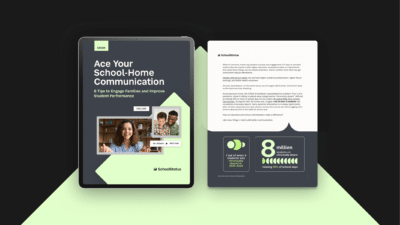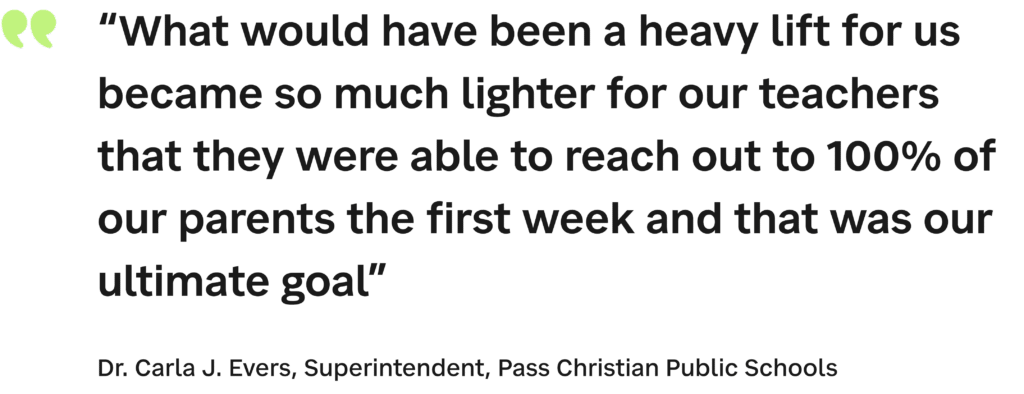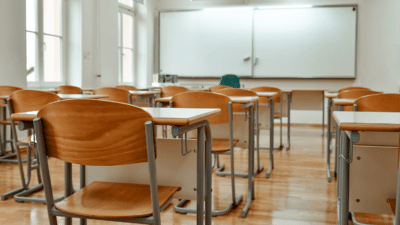
Case Study: Increased Communication During COVID-19
Reducing Barriers to School-Home Communication

The COVID-19 pandemic brought to light many challenges in education that required quick pivots to how things had previously been done. One major shift was the way that schools view communication. The pandemic made it clear that two-way communication between families and schools is crucial to bridge communication gaps. With SchoolStatus Connect, schools and districts have been able to reduce those barriers and, ultimately, engage families in their students’ education.

The Shift in School-Home Communication
The relationship between school and home has changed in recent years, as educators and families alike recognized the importance of regularly communicating with each other.
“I think that before, particularly in high school, Families’ perspective was, ‘You deal with them at school and we deal with them at home.’ Even with my own daughter I was very much that way!” Texas teacher Beth Sullivan laughs. “I think what’s happened now is that Families realize more that it’s a three-way team. It’s the teachers, the student, and the Family—and that our communication is really important.”
Educators felt the change in family-school relationships everywhere as a result of the pandemic. “Now they understand how critical it is that we have that direct communication. Right to the teacher and the teacher right to the Family,” Deputy Superintendent Lee Willis is pleased to see communication gain strength in his Alabama school district. “One of the greatest challenges we faced was communicating with Families—our expectations and what we are going to try to do.”
Communication between families and educators soared during the first few weeks of the shutdown, because it had to. Educators and administrators rushed to establish contact and stability with families and provide continuity in instruction. Whether setting up remote learning structures, developing a paper-based curriculum, or offering emotional support, educators and families began talking more than ever.
This uptick in communication presented unexpected challenges, all of which are still relevant today. Barriers between school-home relationships can include language differences, absence of internet at home, family members working outside of the home, and lack of smartphones. Any one of these can sever the home-school connection.
When schools went into lockdown, there was an urgency to reduce these communication barriers, which led to an overuse of programs, fragmentation, and frustration. More than ever, schools needed to streamline and simplify communication.
The Right Tools Make All the Difference
SchoolStatus Connect bridges the gaps in communication between school and home by reaching the right families at the right time in their preferred language.
“What would have been a heavy lift for us became so much lighter for our teachers that they were able to reach out to 100% of our Families the first week and that was our ultimate goal,” says Superintendent Dr. Carla Evers of Pass Christian Public School District. “We were able to use SchoolStatus [Connect] to touch and communicate with all of our Families, and I’m not sure teachers would have been willing to call from their personal cell phone or their homes, but this made a way for them.”
Further north near Memphis, Desoto County educators have had a similar experience. “SchoolStatus [Connect] has been the best, because we can continue to communicate back and forth with Families—that’s easy!” explains Principal Sara Jane Russell. With SchoolStatus Connect, schools can contact families in their preferred method, whether by text, phone, video call, or email. “Families like that our messages just come in as a text. They feel the ease of communication, the ease of contact.”
Having a tool in place to reliably reach every family is essential to maintain continuity. “Prior to my district buying SchoolStatus [Connect], what I did was I went into our grade program, copied down every Family’s email address, made a group file, and was sending out weekly emails to Families as a group email,” explains Sullivan. “It’s not individualized, it’s not personalized, it’s not in their language in some cases. It was not nearly as effective as this is.”
Principal Russell has a process in place that helps her speak to everyone, “I communicate en masse through SchoolStatus [Connect] a lot. I send one mass message a week, to let them know I’m still here,” says Russell. “They’re sending me pictures of their kids, and what’s going on. Most of it is just about their well-being. Smiling, letting me know how they’re doing.”

Looking Ahead to the Future
Education is continuing to change, grow, and overcome new challenges. SchoolStatus Connect helps schools meet those changes with clear, consolidated communication pathways.
“I think the Families are going to be more receptive [in the future],” Djuna Dudeck shares. With close to 1,200 students in her Arkansas middle school, Professional Development Facilitator Dudeck knows a thing or two about keeping tabs on moving parts. “I think this is going to change the vision of the families.”
Education in the United States has taken a drastic turn since the pandemic, and schools are forever changed. Now is the time to establish communication processes, frequency and consistency to engage families with their students’ success. “Across the board, SchoolStatus [Connect] has been a tremendous partner in helping us to bridge that gap in communication,” says Deputy Superintendent Lee Willis. “It’s not a one-way dialogue, it’s two-way dialogue with Families and teachers and that just helps us in so many ways.”
“Across the board, SchoolStatus [Connect] has been a tremendous partner in helping us to bridge that gap in communication,” says Deputy Superintendent Lee Willis. “It’s not a one-way dialogue, it’s two-way dialogue with Families and teachers and that just helps us in so many ways.”
—Lee Willis, Deputy Superintendent, Morgan County School District

Thanks to our contributors!
Beth Sullivan, Teacher, Sanger Independent School District
Lee Willis, Deputy Superintendent, Morgan County School District
Dr. Carla J. Evers, Superintendent, Pass Christian Public School District
Sara Jane Russell, Principal, Desoto County School District
Djuna Dudeck, Professional Development Facilitator, Pulaski Special School DistrictSee how SchoolStatus can help your district meet its goals.
To learn more about how SchoolStatus Connect can help your district engage more families and create a positive learning environment in schools, contact our team.



